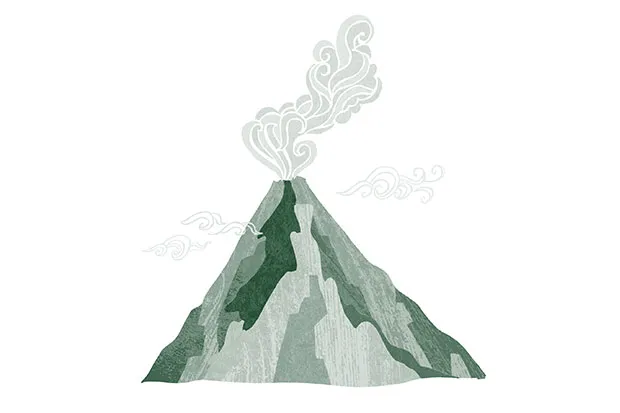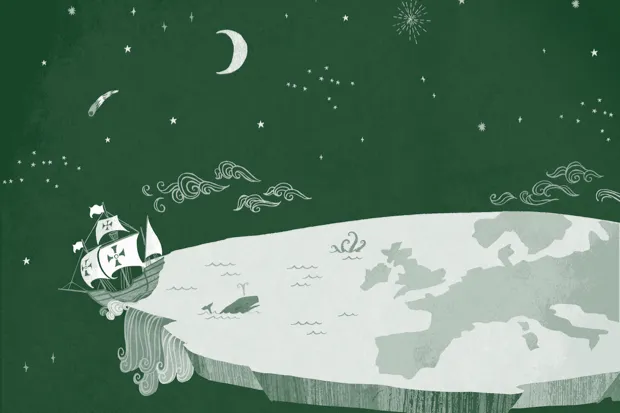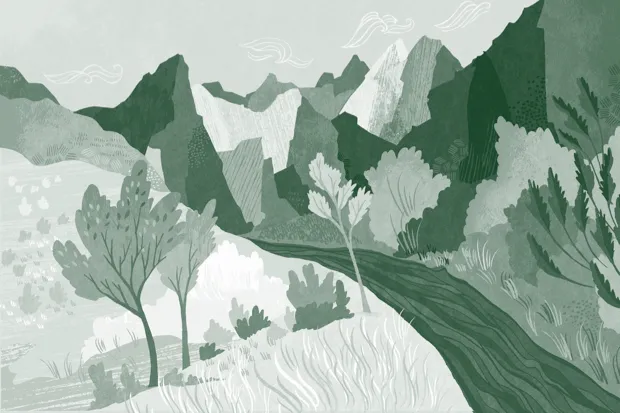1
Volcanoes always look like this - Wrong!

The idea that volcanos must be tall, conical structures thrusting out of tropical rainforests is largely a Hollywood invention, a bias towards cinematic grandeur; the monster in paradise. Any movie volcano must also include a bubbling lava pit -- handy for dispatching villains.
In the real world, volcanoes come in many shapes and sizes, and can be found in all climates. The lava pit is vanishingly rare; only six volcanoes in the world have semi-permanent pools of lava visible from the rim. The commonest type of volcano looks very different to that of the popular imagination. Volcanologists estimate that 75-80 per cent of all magma release takes place in the ocean. There may be as many as a million submarine volcanoes around the globe.
2
Humans have permanently damaged the ozone layer - Wrong!

In 1984, a large depression in the ozone layer was detected over the South Pole. Research soon found the culprit. Molecules called chlorofluorocarbons (CFCs), used for refrigeration and in aerosol cans, had infiltrated the upper atmosphere. Here, they readily reacted with ozone, knocking it out of circulation at a faster rate than it could reform. Less ozone meant less protection from UV rays. The problem grew as the layer shrank. A worldwide crisis in public health seemed inevitable.
The crisis coincided with widespread awareness about human-induced climate change, and the two issues were commonly conflated. But while climate change remains a pressing problem (to put it mildly), ozone depletion is no longer a grave concern. CFCs and related chemicals were banned in the 1987 Montreal Protocol. Within a decade, ozone levels began to stabilise and then recover. The ozone hole is still around, but shrinking. Before the end of the century, we should be close to natural coverage once again. The damage we caused to the ozone layer is lamentable, but it also serves as a timely and inspiring wake-up call. When humans get together, understand the facts and agree to collaborate, even a planet-wide problem can be reversed.
3
Seas always have coastlines - Wrong!

Oceans are vast stretches of open water, whereas seas are bordered on at least one side by land. Some are almost entirely surrounded, as with the Mediterranean and Black seas. Other times, the borders are more hazy and we must play dot-to-dot with island chains to figure out where sea becomes ocean. But, by and large, seas have coasts. They are waters in which we can paddle.
There is one, and only one, exception to this rule. The Sargasso Sea, over to the western side of the Atlantic, has no land borders. Instead, it is corralled by the North Atlantic Gyre. What sounds for all the world like an obscure R&B sub-genre is, in fact, a hoop of currents that engirdle the Sargasso. The gyre keeps the waters of the Sargasso calm and clear, though they are increasingly besmirched by plastic waste, spun in from without. For that reason, the sea has acquired an even more evocative name, as the North Atlantic Garbage Patch.
Columbus discovered America, and Magellan sailed right round the world - Wrong!

The journeys of Christopher Columbus are laden with myth. He was not the first European to reach the New World (that’ll be the Vikings), he never set foot in North America, and he did not believe in a flat Earth. These misconceptions are now commonly noted; less so the shortcomings in our memory of round-the-world pioneer Ferdinand Magellan.
When Magellan set off from Spain in 1519, he had no intention of circumnavigating the globe. His task was to find a westerly route around America to the Spice Islands of Indonesia. This he did. Sadly, he also got himself killed in a local turf war. It fell to his men to pilot the single remaining ship back to Europe. Those 18 crewmen, of the 270 who had set out, were the first to circumnavigate the globe in one voyage.
Mount Everest is the world’s tallest mountain - Wrong! (sort of)

That Everest is the tallest mountain in the world would seem a fact as unassailable as the climb itself. After all, it’s more than 200 metres taller than its nearest rival of K2. But it depends how you measure.
Everest’s height of 8,848 metres is the distance between its summit and sea level. But some mountains carry on below sea level. The most impressive is Mauna Kea, a volcano on the main island of Hawaii. From the sea bed to its summit, Mauna Kea would top 10,200 metres. If the oceans were drained, then Mauna Kea would, by all measures, be the tallest peak on Earth. If we were to measure the distance from the centre of the Earth to the tip of the summit, then Everest would be pipped by Chimborazo in Ecuador. It stands ‘just’ 6,263 metres above sea level but, because the planet bulges close to the equator, its peak is further from the centre of the Earth than Everest’s by some 2,000 metres.
Adapted from Everything You Know About Planet Earth is Wrong by Matt Brown (£9.99, Batsford)
Follow Science Focus onTwitter,Facebook, Instagramand Flipboard